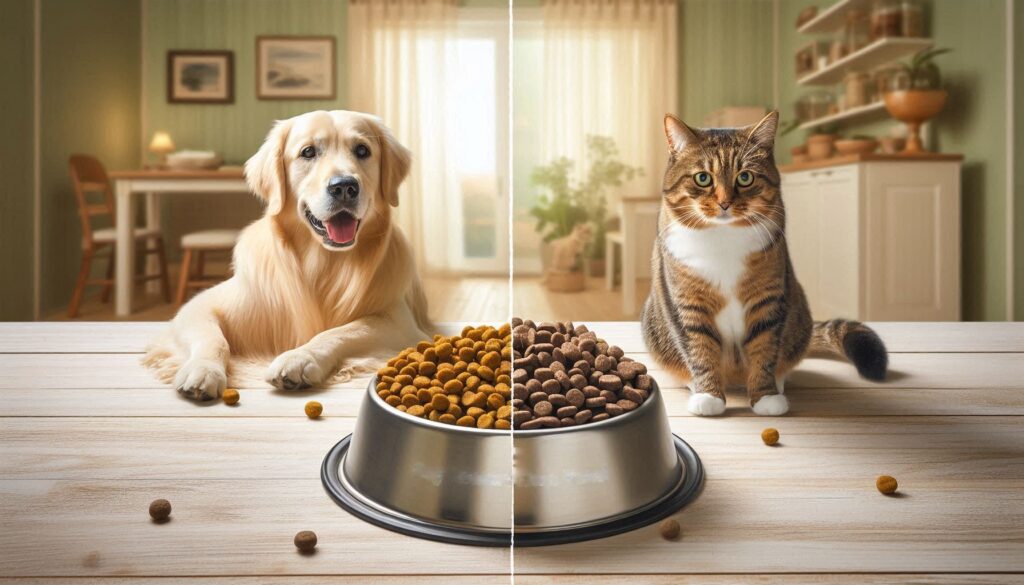
Switching your pet’s food isn’t as simple as swapping out one bag for another. A sudden change in diet can cause digestive issues like vomiting, diarrhea, or refusal to eat. Whether you’re introducing a healthier diet, accommodating allergies, or switching brands, a slow and controlled transition is key.
In this guide, we’ll cover why diet transitions matter, how to do it safely, and tips to make the process easier for both you and your furry friend.
Why a Gradual Transition Is Important
- Prevents Stomach Upset – Pets have sensitive digestive systems, and sudden dietary changes can cause gastrointestinal distress.
- Helps Pets Adjust to New Flavors & Textures – Some pets are picky eaters and need time to accept new food.
- Avoids Food Rejection – A gradual shift helps pets recognize the new food as safe.
- Supports Gut Health – Their gut bacteria need time to adapt to new ingredients.
The Step-by-Step Transition Plan
7-10 Day Transition Schedule
To make the change smooth, follow this structured plan:
- Day 1-2: 75% old food, 25% new food
- Day 3-4: 50% old food, 50% new food
- Day 5-6: 25% old food, 75% new food
- Day 7-10: 100% new food
Pro Tip:
If your pet shows signs of discomfort (diarrhea, vomiting, or refusal to eat), slow the transition down and extend the process by a few extra days.
Common Signs of Digestive Issues & What to Do
Watch for These Symptoms:
- Loose stools or diarrhea
- Vomiting
- Excessive gas
- Loss of appetite
What to Do If These Occur:
- Slow down the transition process
- Add a small amount of plain pumpkin puree (not pie filling) to ease digestion
- Ensure your pet stays hydrated
- If symptoms persist beyond a few days, consult a vet
Special Considerations for Puppies, Seniors & Sensitive Pets
Puppies & Kittens:
- Their digestive systems are still developing, so transition over 10-14 days instead of just 7.
- Choose a food designed for their life stage to ensure proper nutrition.
Senior Pets:
- Older pets may have slower digestion and require an even more gradual change.
- Look for diets with joint support & high-quality protein to maintain muscle mass.
Pets with Sensitive Stomachs:
- If your pet has a history of food allergies or sensitivities, introduce limited-ingredient diets first.
- Consider adding probiotics to support gut health during the transition.
Making the New Food More Appealing
If your pet is hesitant to eat the new food, try these tricks:
- Mix in warm water or broth to enhance the aroma
- Top with their favorite treats (freeze-dried meats work great!)
- Hand-feed small amounts to create positive reinforcement
- Try different textures – some pets prefer wet food mixed with dry kibble
Best New Diets to Try at P.A.W.S.
At Purr And Woof Supply (P.A.W.S.), we offer premium pet food options free from fillers, artificial ingredients, and common allergens.
For Dogs:
- High-protein kibble
- Omega-rich fish-based formulas
- Grain-free & hypoallergenic options
For Cats:
- Real meat-based wet & dry food
- Raw diet for ultimate nutrition
- Novel protein sources (duck, venison) for sensitive stomachs
Shop now at www.purrandwoofsupply.com and start your pet’s healthy transition today!
Transitioning your pet to a new diet requires patience and planning, but it’s worth the effort for their long-term health and happiness. Follow the gradual transition plan, monitor for any issues, and make adjustments as needed.
Have you switched your pet’s diet before? What worked best for you? Share your experience in the comments! 🐾